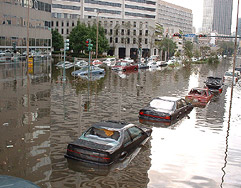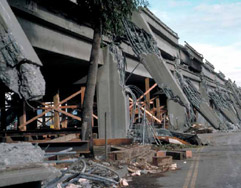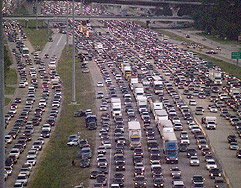Stormwater runoff is a major cause of water pollution in urban areas. When rain falls on our roofs, streets, and parking lots in cities and their suburbs, the water cannot soak into the ground as it should. Stormwater drains through gutters, storm sewers, and other engineered collection systems and is discharged into nearby water bodies. The stormwater runoff carries trash, bacteria, heavy metals, and other pollutants from the urban landscape. Higher flows resulting from heavy rains also can cause erosion and flooding in urban streams, damaging habitat, property, and infrastructure.
A resilient, cost-effective approach to managing wet weather impacts is green infrastructure. Green infrastructure techniques reduce and treat stormwater at its source while delivering environmental, social, and economic benefits. Some examples of green infrastructure approaches include rain barrels, rain gardens, and permeable pavement.
EPA has a number of online resources that include fact sheets and links to information about stormwater and urban runoff. EPA’s websites also have links to many other state, local and nonprofit organizations that are actively working to communicate how citizens can do their part to reduce their stormwater footprints.
–U.S. Environmental Protection Agency on YouTube
Tags: EPA, Runoff, stormwater, U..S. Environmental Protection Agency, US EPA, Water






 RSS Feed
RSS Feed